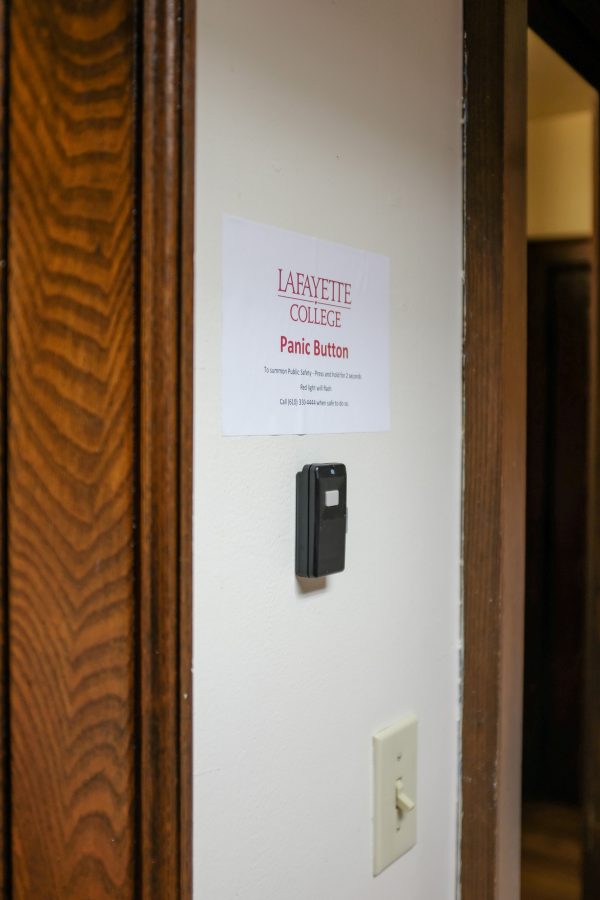The actions of knife-wielding McCartney Street robber led students living off-campus to return to new security features in their home. Lafayette decided to add panic buttons and auto-lock doors to college owned off-campus housing this semester. According to Director of Public Safety Jeff Troxell, the College installed these devices in direct response to the two armed robberies that occurred in off-campus student housing in an effort to increase security measures.
In each case, the College was put on lockdown after the intruder, who has since been apprehended, made his way into apartments on the 400 block of McCartney Street and threatened students.
Located in the common area and in each bedroom of all college owned off-campus properties, as well as in other select locations on campus, the panic button sends an alert to Public Safety if pressed down for at least two seconds. Public Safety is then notified about the location from which the alert was sent and can send their team. Like bank robbery alarms, these devices differ from regular emergency alarms as they signal a higher level of danger to authorities, according to Troxell.
“This is a panic duress alarm where you either don’t feel safe or you physically can’t summon [Public Safety] for help, and that’s the intent behind that. [It’s] up to us on how we want to approach [the situation] at the time, but we’re coming a little more briskly. And the scenario is a little more serious in our minds as we’re going in there,” Troxell said.
As part of the response, Public Safety may approach the scene with lights and sirens, and may or may not enter the premises without knocking.
In light of this heightened response, an information sheet given to off-campus residents noted not to use the panic button if there is a fire or someone needs medical assistance, if one wants to report a fight or to inform authorities about damaged property.
If the alarm is activated in a non-emergency situation, it will be referred to the Office of Student Conduct with possible fines, disciplinary probations and suspension or expulsion, according to the information sheet.
While Troxell acknowledged that the panic button should be used in case of a dire emergency, he emphasized that the individual should “call [the Public Safety number] when you feel safe to do so. We would always prefer a phone call to the dispatch, and that’s the best way to get intelligence or information on the calls that we’re going to.”
Not all colleges have panic buttons, Troxell said. But Lafayette students seem glad that their campus now has security devices like panic buttons and auto-lock doors.
Danielle Mullan ’22, who is currently living in the McCartney House, said that the panic button provides an extra feeling of safety.
“I was also living in an off campus house last semester when the whole incident happened. And at that point there wasn’t any button within the bedroom to have Public Safety come. So I guess it’s nice in that sense, it removes boundaries of having to get your phone, find the number and call in case something bad does happen,” Mullan said.
Mullan said that she still is getting used to the auto-lock front and back door in her house as well as the panic button. In addition to dealing with the hassle of auto-lock doors, Mullan and her friends worry about mistaking the light switch for the panic button, as the two are located close to each other.
In any case, the safety provided by these devices seem to trump the minor stresses associated with them.
“I think it’s a positive addition to the campus. [We are] looking forward to having that capability but hoping we don’t have to ever use that. That’s the idea,” Troxell said.







































































































